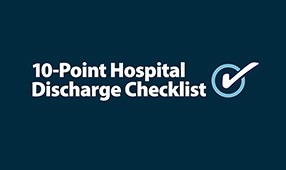Key takeaways
- Changes in behavior and activity levels may be signs that a parent could benefit from assisted living.
- Advantages include a built-in social network, 24-hour help and all-inclusive costs.
- Downsides include tiered costs for special care and some loss of independent lifestyle choices.
It may not be something that’s talked about regularly around the dinner table, but at some point, aging parents and loved ones may need some assistance with activities of daily living.
The decision as to whether a parent will “age in place” and continue to live in her own home, possibly with the help of an in-home caregiver, or move into an assisted living community where more institutionalized care is available, is no easy task. Aging in place is the first choice of the majority of older adults. Most seniors want to maintain their independence as long as possible, and remaining in a lifelong home is a powerful indicator of self-reliance. But for many, independent living may not be the safest or most cost-effective option.
Signs that assisted living may be on the horizon
How do you know when it may be time to transition to some form of assisted living? Here are a few signs to watch for:
- Increasing number of accidents, including falls or car fender benders
- Slow recovery from minor illness like a cold or flu
- Worsening chronic health conditions, such as diabetes, heart problems or COPD
- Difficulty with normal activities, including dressing, cleaning, shopping, cooking, paying bills and managing medications
- Unexplained curtailment of social activities and friendships
- Lax housekeeping, including bathroom mold, lots of dust, increasing clutter, dead or dying houseplants and spills that haven’t been cleaned up.
If you want a professional opinion, ask your loved one’s doctor to prescribe a visit by a social worker or geriatric care manager. Some seniors may resist the idea of a “stranger” coming into their home to check on them. But in other cases, a parent may be more comfortable sharing their personal issues with a professional than with their own children.
As long as your parent can care for herself or get by with just a few hours of assistance from family members or paid help, aging in place may be the most cost effective option. But once your loved one needs more continuous care, the costs associated with aging in place compared to an assisted living community become more equivalent. This can be particularly true if you live in a big city or on either coast, where in-home care costs tend to be higher.
Advantages of assisted living
Moving your loved one into an assisted living facility can take a big burden off of you since the facility is designed to take care of just about every need. Some of the advantages of making the move to assisted living include:
- Built in social network. Assisted living is designed as a shared community, with a common dining hall and planned activities that can help seniors stay active and social.
- No home maintenance. If your loved one is living in a house, physical maintenance, yard work, and property taxes are all expenses that must be added to any caregiver costs. Assisted living takes all those costs off the table.
- 24-hour assistance. Evenings and overnight are the riskiest times for seniors, especially for someone with signs of dementia. Assisted living facilities have staff on call 24-hours a day to respond to any sign of distress and to check on someone who may be prone to falling.
- Access to government benefits. If your parent is eligible for government financial assistance, such as Medicaid or veteran’s benefits, moving into an assisted living facility may offer benefits not available through home care arrangements.
Potential pitfalls of assisted living
Assisted living communities vary in their level of care, amenities and costs, so it’s important to do careful research on the facilities in your area. In particular, pay attention to:
- Tiered care levels. Basic rent and meal service may seem reasonable, but depending on how much care your parent needs, costs can rise quickly. Tiered pricing includes the number of daily activities requiring assistance and the number of medications that must be administered daily, among other factors.
- Dementia and skilled nursing care. Aging is degenerative and you must give some thought about the level of care that may be necessary several years down the road. Some facilities have skilled nursing care and Alzheimer’s care on site, meaning your loved one could transition into higher care levels without having to physically move to another facility. Be aware of and budget for the escalating costs of these specialized services.
- Group living and life scheduling issues. The social nature and regimented schedules of assisted living communities may be hard for some seniors to adjust to, particularly if they are accustomed to living alone and making their own decisions about what to eat or when to wake up in the morning.
Do thorough research before making the call
If your aging parent is having trouble taking care of herself, or you think she could benefit from a more socially engaging environment, assisted living may be a good option. But do your research.
A good place to start is the search function at caring.com. Put in your zip code to get a list of facilities in the area. APlaceForMom.com is another resource that can provide senior living options by zip code search. This also lists questions to ask when you call or visit a facility along with a downloadable checklist to take with you. If possible, include your parent in the evaluation process. After all, they are the ones who will live there, so it’s important that they feel comfortable with the choice.












